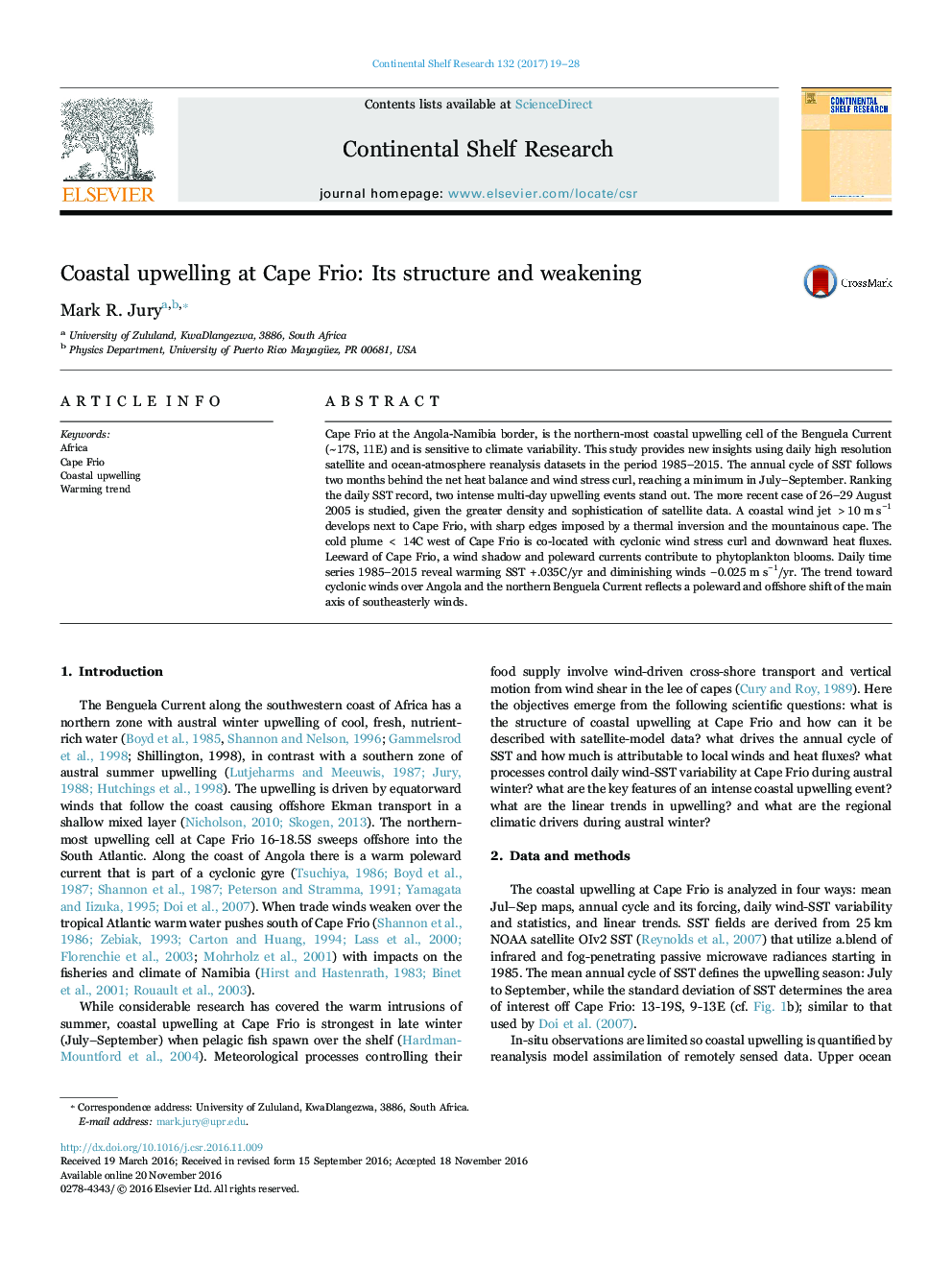| Article ID | Journal | Published Year | Pages | File Type |
|---|---|---|---|---|
| 5764507 | Continental Shelf Research | 2017 | 10 Pages |
Abstract
Cape Frio at the Angola-Namibia border, is the northern-most coastal upwelling cell of the Benguela Current (~17S, 11E) and is sensitive to climate variability. This study provides new insights using daily high resolution satellite and ocean-atmosphere reanalysis datasets in the period 1985-2015. The annual cycle of SST follows two months behind the net heat balance and wind stress curl, reaching a minimum in July-September. Ranking the daily SST record, two intense multi-day upwelling events stand out. The more recent case of 26-29 August 2005 is studied, given the greater density and sophistication of satellite data. A coastal wind jet >10 m sâ1 develops next to Cape Frio, with sharp edges imposed by a thermal inversion and the mountainous cape. The cold plume < 14C west of Cape Frio is co-located with cyclonic wind stress curl and downward heat fluxes. Leeward of Cape Frio, a wind shadow and poleward currents contribute to phytoplankton blooms. Daily time series 1985-2015 reveal warming SST +.035C/yr and diminishing winds â0.025 m sâ1/yr. The trend toward cyclonic winds over Angola and the northern Benguela Current reflects a poleward and offshore shift of the main axis of southeasterly winds.
Keywords
Related Topics
Physical Sciences and Engineering
Earth and Planetary Sciences
Geology
Authors
Mark R. Jury,
